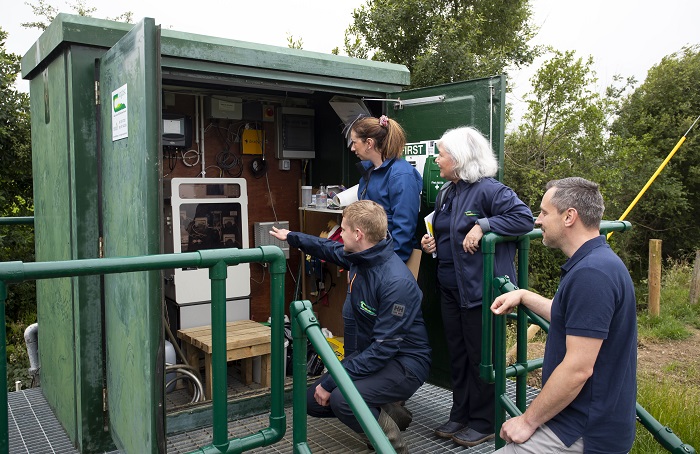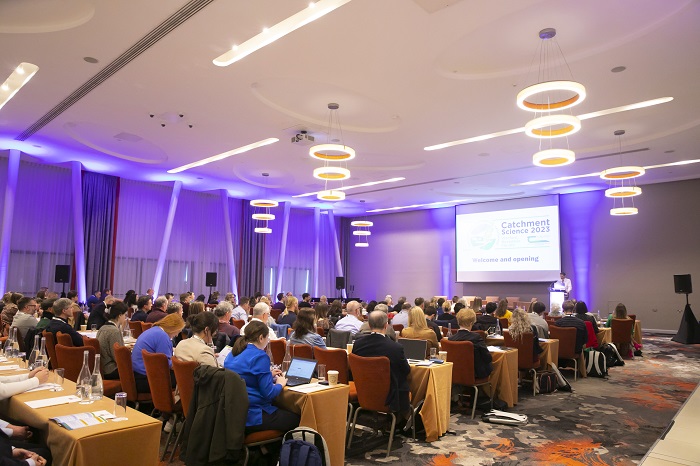01 December 2023
Right product, right place and right time key for farmers in ACP catchments

Working with over 300 farmers across six catchments, the Agricultural Catchments Programme (ACP) has been in operation since 2008.
A Department of Agriculture, Food and the Marine funded initiative, it’s a combined research and advisory programme with a broad remit. To put it simply though, it aims to research and monitor how good farming practice can maintain and improve water quality.
As part of the recent Catchment Science 2023 Conference held in Co. Wexford, a number of farmers working closely with Teagasc advisors and technicians explained how they’ve interacted with the ACP Programme over the last number of years and how the advice being offered has benefited their farming systems.
Kevin Feeny operates a calf to beef and sheep farming enterprise in the Cregduff catchment, near Ballinrobe, Co. Mayo. Consisting of 25ha of grassland, the farm is home to a sheep enterprise of 80 ewes, from which lambs are creep grazed and finished at 15-16 weeks, and a calf to beef system which sees 80 Angus or Hereford calves purchased and carried to beef.
Being an active farmer in the Cregduff catchment has allowed Kevin to become more focused on his farming activities, not only does he now complete a Teagasc eProfit Monitor annually, changes to the way fertiliser is being applied on the farm have been introduced.
Addressing delegates at the conference, Kevin said: “When I grew up farming with my dad, the fertiliser was bought in February and the whole farm was fertilised one time; on a dry day, it all went out.
“Through the ACP, all of the land was soil tested for lime, phosphorous (P) and potassium (K) and a Nutrient Management Plan was drawn up. Working with our advisor, very little fertiliser is now put out very early in the year – just enough to get the grass growing – and then in March, when the soil is right, we put out P and K.
“Fertiliser spreading is more controlled. We are growing more grass, we have a paddock system and we are growing and utilising grass better,” Kevin explained.

Delegates at the Catchment Science 2023 Conference
John Walsh, a dairy farmer in the Timoleague catchment, operating a spring-calving system, has engaged with his ACP Programme Advisor Oisin Coakley throughout the course of the programme.
He believes that every farm in the country should be part of a catchment to understand the intricacies of water quality and how actions at farm level can have a positive impact of the water within their own catchment.
Like Kevin, John has implemented a Nutrient Management Plan to ensure the correct nutrients are delivered to the right place at the correct time.
On this, he said: “Soil sampling every couple of years has been a huge benefit. Although it is grand to have your soil tested, you need to sit down and look at the results. We are also grass measuring every paddock, completing 30 walks per year, and that allows us to pin point the weaker paddocks in terms of grass production. The weaker paddocks are then compared to the soil test results and if fertility is an issue, it’s corrected.”
John is also an advocate for low emission slurry spreading, commenting: “We have the trailing shoe six years now and it has turned out farm inside out to be fair. We are growing an unbelievable amount of grass and getting slurry out early [at the right times of the year].
“By getting slurry out early, we have cut our fertiliser use. We used to follow slurry with 40 units of nitrogen after grazing. We are down to 22 units now and are still growing as much if not more grass. That is one of the most important things that has happened.”
Colin Bateman also featured in the panel discussion. His farming efforts have focused more on tillage since development of an anaerobic digester on his farm in 2019 – mainly growing maize, cereals and some beet. A part of the farm is more suited for grassland and an area remains from which grass is sold to local dairy farms for silage.
On his involvement in the ACP, he said: “I was delighted to be approached initially and I was delighted to host it on my farm. Things have evolved bit by bit over the years with the ACP Programme, but I was keen to find out the data on day one to find out the nitrate and phosphate in the stream.”
Through his involvement in the programme, Colin has been able to witness the benefits that buffer strips and catch crops can bring to water quality when used as part of a tillage operation. As a result, he has increased the area of catch crops grown on his farm to help catch or mop up any nutrients that may still be present in the soil post-harvest to prevent losses to waterways over the winter months.
Additionally, soil testing and the development of a Nutrient Management Plan has allowed him to make better use of fertilisers – particularly the digestate generated from the AD plant – to grow cereal and tillage crops on his farm.
The Catchment Science 2023 Conference was held in Wexford on November 7-9th. For more information on this conference, click here.
Also read: Catchment Science 2023
